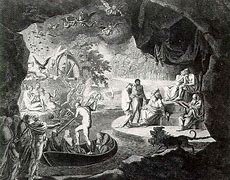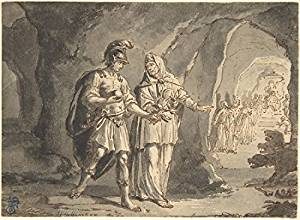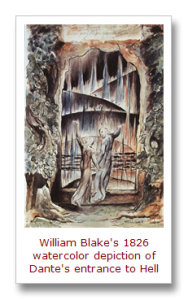Tennyson’s “The Lady of Shalott” is an examination of the restrictions on unmarried girls during the Victorian era. By setting the poem in the familiar, fictional land of Camelot it is made distant in the acknowledgement that the situation recounted is decidedly impossible—the citation of Sir Lancelot, of fairies and curses, further emphasizes that the author is talking about a situation which is far enough from the reality of a modern, Victorian society to be safe subject matter. The poem’s main character, the Lady of Shalott, is cursed never to be able to look down on Camelot directly. Instead, she must look through a mirror, and the distorted, smaller version of the society that she is allowed to see is what she “weaves by night and day” (Tennyson, Part II, 1).
During the Victorian era, girls—especially those who were unmarried– were intentionally kept from much of society that was deemed dangerous or inappropriate (much like today). Even the restrictive clothing that they wore kept them from exploration or independence. Just like the reflection in the mirror, the slices of the world that English women were allowed to participate in was limited and often superficial. For the Lady of Shalott, this means literally only seeing the “shadows of the world” that the mirror can show (Tennyson, part II, 12). While the Lady of Shalott is in total isolation and supposedly cursed, she is a paradigm of morality, only weaving and working at an appropriate task all day, every day. Until, of course, temptation shows up.
For the Lady of Shalott, this temptation takes the form of Sir Lancelot (who was apparently a sexual temptation for every woman he encountered). Upon seeing his “coal-black curls” (part III, 31) amidst the bright glory of the young knight, she promptly forgets everything about the curse that has dictated her life and whips around for a better look. In doing so, she supposedly calls down the mysterious curse, but we don’t actually see any ill effects rooted in magic (unless you think that from the time she looks on Camelot and the mirror cracks she is possessed). She then commits suicide, by laying down in a boat and letting herself freeze to death on the river at night. By the time she arrives in Camelot and physically encounters Lancelot, she’s already dead. His comment that “’She has a lovely face’” (part IV, final) confirms where the encounter would have gone if she had still been living to give into her lust for him. This young woman, who becomes symbolic of all moral young women in Victorian society, is literally stuck so thoroughly between upholding societal moral standards and acting as human nature would have her, that she kills herself. The ending makes this a critique of the rigid moral standards that lead Victorian women to misery. Tennyson criticizes the social standards for girls and their negative effects, much like we regularly do today.
Author: Julia
The Final Battle
Throughout the book, the clash between the Englishmen (sans Van Helsing, Quincy) and foreigners from the eastern reaches of Europe figures prominently. Part of the terror of Dracula is his unknowability, which comes in large part from his foreignness. The entire book leads up to the slaying of Dracula, unquestionably the story’s great villain, but in the moment of truth, the only battle that takes place is with Transylvanian “peasants or gypsies of some kind,” (Stoker 397) who attempt to carry the coffin Dracula is contained in up to his castle. That Quincy, the only main character death of the novel (if you don’t count Lucy), is murdered in this conflict not by Dracula, but by the “gypsies” who stab him in his efforts to reach the coffin, is indicative of the fact that ultimately, Dracula the vampire is not the true threat to the peace of the little squad we’ve followed: the greatest threat is foreigners out of a collective “east” (the reason Van Helsing and Quincy get a degree of a pass– they’re from the Western side of the Danube).
During the final battle, the foreignness of the “gypsies” is reinforced every time the focus falls on them. Mina notes that “the leader of the gypsies” on his horse looks “like a centaur…” (Stoker 399) quite literally introducing the idea that these foreigners are half human and half beast, much like Dracula himself, who they associate with in the beginning when Harker visits by helping him carry boxes and at the end by transporting him again in the box of Transylvanian earth. The same centaur-like leader speaks “in a fierce voice” that Mina can’t understand (Stoker 399) and which further emphasizes his dangerous nature. The entire troupe is disorganized and animalistic. When the leader of their camp commands them, they “formed round the cart in a sort of undisciplined endeavor, each one shouldering and pushing the other in his eagerness to carry out the order” like a pack of dogs shoving together over a piece of meat (Stoker 399). They are a dehumanized mass, irrelevant except to reinforce the idea that foreigners (in this case presumably Transylvanians) are dangerous, but in an inept and ultimately cowardly way, as we can see when they “instinctively cowered aside and let him [Jonathan] pass” (Stoker 400) and in their messy efforts to follow orders.
The importance of the villainy of foreigners falls on two fronts. For the audience it rings like an imperialistic argument about the inherent inferiority of non-westerners. That every “eastern” character in Dracula is dehumanized literally to the point of being like a human-beast hybrid (centaur, vampire) emphasizes the superior humanity of Western peoples. The author, it would seem, allows himself the same degree of allowance that he gives to his other non-English but Western characters, like Van Helsing and Quincy. Because he’s from Ireland (and they’re from the Netherlands and the U.S.) despite being foreign he is decidedly Western and therefore “deserves,” as the text seems to suggest, an exception to the dehumanizing effects of being an “Eastern” foreigner.
The Not-So-Holy Trinity in Dracula
Bram Stoker’s status as an Irish Catholic manifests itself in Dracula through rosaries, prayers, the sign of the cross, and the power of religious material against the evils of the unrelated supernatural. If the rightness of holy Catholic imagery and objects is confirmed by their presence when opposed to Dracula, their inversion in his support must strike the reader as deeply unsettling. This occurs most notably in the presentation of the three vampiric women as an inversion of the Catholic holy trinity.
The fact that there are three women in the first place immediately throws up religious flags. The Catholic association with the number three is primarily through a belief in the holy trinity, made up of the father, son, and holy spirit. Notably, in this configuration two things are alike (the father and son, being God and Christ, personified as human) while one is not (the holy spirit, abstracted and not often depicted as humanoid). In the same way, Stoker’s three women are split up into a two-similar-one-different configuration. Two of the women “were dark, and had high aquiline noses, like the Count, and great dark, piercing eyes…” (Stoker 44). The third stands out, physically “fair, as fair as can be, with great, wavy masses of golden hair and eyes like pale sapphires,” (Stoker 44) which separate her from the other two.
That the two darker figures stand separately while the fair-haired woman interacts with Jonathan furthers her role as the ‘holy spirit’ figure of the three. The generally accepted idea is that human beings don’t interact with the father or son while on Earth, but the presence of the holy spirit is felt to be physically effective even as humans live. “The fair girl advanced and bent over me…” (Stoker 45) makes her the only one of the three to physically touch Jonathan. Dracula appears and separates him from the women before the other two have contact with him. In doing so, the father and son remain distant—because Jonathan has not died at the administrations of the three women he cannot yet have contact with those two parts of this inverted holy trinity.
Stoker using the inversion of religious imagery as a horror tactic is important because it speaks to Victorian fears surrounding religion. Much in the same way that Victorians feared the misuse of machinery, the perversion of religion was a wide societal concern and the reality that religion is inherently a belief in the supernatural was at odds with the logical ideals of the day. Stoker takes an acceptable belief in the supernatural and twists it to showcase an unacceptable manifestation of the supernatural, hitting a Victorian reader in a particularly twisted way.
Was it worth the tea?
“’It is a swamp adder!’ cried Holmes; ‘the deadliest snake in India.’” (Doyle 57)
In this moment Holmes has just opened the door of Dr. Roylott’s bedroom to find him killed by the same snake he used to murder Julia Stoner. While Dr. Roylott is undoubtedly cruel and cunning, a great deal of terror for the Victorian reader would have come from the image of a snake in the bedroom, crawling about the body of a sleeping girl every night until it eventually bit her, ending her life.
The use of an Indian snake as the vehicle of such frightening imagery betrays the fear that Victorians felt for the lands they colonized: India was an English colony for nearly 300 years, but most of the population in England would never have physically gone there. This gives it a tangible connection to England while leaving it foreign enough to be a stage for English fears (particularly scientifically-minded Victorians’ fears of the unknown and the untamable in nature) to play out on. Sir Arthur Conan Doyle has the snake wrapped around the head of the villain of the story—completely unnecessary positioning for the bite that killed him– noticeably playing off the image of the pagri (turban) which many Indian men wear. In this way the English doctor is, in the moment when his greatest crime is revealed, depicted as an Indian man. It is also worth noting that, supposedly, Roylott was an upstanding gentleman bent on improving his familial situation through “professional skill and his force of character” (Conan Doyle 41) until he went to India and became violent and angry. The demonization of India through Roylott is ironic; nobody and nothing from India would have harmed anyone were it not through the actions of a white man. Much like many politicians do today, Conan Doyle plays off the racism and xenophobic fears of his intended audience to sell his work.
Swamp Adder:

Audley Court as the Underworld
“The sun was low in the skies as they took a short cut through the meadows, and crossed a stile into the avenue leading to the archway– a lurid, heavy-looking, ominous sun-set, and a deathly stillness in the air, which frightened the birds that had a mind to sing, and left the field open to a few captious frogs croaking in the ditches,” (Braddon 67).
I believe Braddon is intentionally presenting the Audley Court as the underworld. It is grand (the underworld is often associated with jewels and wealth) but eerily still, with a literally “deathly” lack of movement. The sun-set (note that the sun is going down, leaving the world in darkness and bringing out the predators and fears of the night) is “lurid, heavy-looking, ominous…” and leaves behind it none of the suggestions of life or vitality that are often coupled with sun imagery– in fact, Braddon gives us the opposite. The “short cut” and “meadows” that George and Robert take suggest danger (short cuts make long delays, Persephone is stolen in a meadow) that great mythological heroes often face when straying from assigned paths (Odysseus, Theseus, etc.). The “archway” that Braddon describes is a symbol associated with the underworld (see images below). The implication of presenting Audley Court as such just as our “hero” (George) and his friend (Robert) makes it clear that this will be the end of the current phase for them. It also implies that the inhabitants (Lady Audley) are not so innocent or lively as they intentionally present themselves as being.


Arnold Houbraken, Alamy Stock Photo

https://www.youtube.com/watch?v=Gt3H5bBJypU
Link: (0:46-End) Sirius Black death: passes through archway